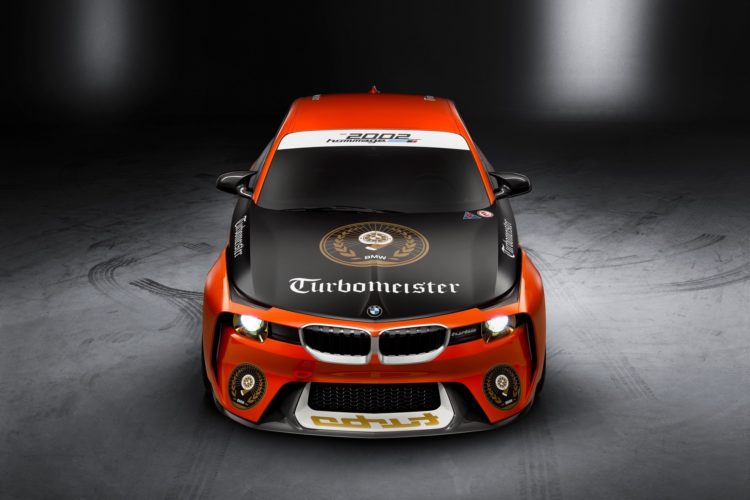Having done this job for several years, I’ve tested most of the high-performance sedans on the market. With the exception of the Tesla Model 3 Performance (Tesla won’t let me test one) and the Audi RS4 Avant (not available here in the US), I’ve driven just about every performance sedan on sale. Yet each and every time I slide behind the wheel of the Alfa Romeo Giulia Quadrifoglio, it reminds me of why it’s the best of them
Alfa recently loaned me a 2020 Giulia Quadrifoglio for a week to test its new updates. My previous test drive of the Giulia Quadrifoglio was a few years back and it was a heavily flawed car then. Almost all of its interior switchgear felt cheap, its infotainment system was atrocious and its backup camera looked like it was ten years old. Despite those issues, though, the Quadrifolgio charmed the hell out of me, making it my favorite sports sedan in he word.
For 2020, Alfa Romeo has updated most of what made the Giulia so frustrating, giving it mostly new switchgear on the center console and a newly updated infotainment system. That might not seem like a comprehensive overhaul but those changes make a big difference. Now, rather than being a point of frustration, the interior is actually quite helpful. It’s still not perfect but it’s far better than before.
Take the new center console, for example. The pre-facelift Giulia had a shift lever so flimsy that using it was actually nerve-wracking, as it always felt as if it would break. The iDrive-esque rotary dial felt so cheap that you never knew when it was going to pop off. Don’t even get me started on the infotainment system, which felt as dated as the original iPhone.
Now, though, the new interior actually feels quite nice. The shift lever is covered in leather, with contrast red stitching, the new rotary dial is much nicer to touch and use and the infotainment system is updated to the point where it’s relatively easy to use and nice to look at. The infotainment is still quite a bit below the best in the business but it’s fine and doesn’t take away from the experience, like the pre-facelift car did.
Even the center console has been revamped, so it gets new cupholders and one of the most convenient wireless mobile charging bins I’ve ever used. So it’s a much nicer car to get along with on a regular bases.
Thankfully, all of the good bits about the original car remain. The steering wheel is near-perfect (now a bit thicker but still nice and thin) and the seating position is excellent. It’s a proper driver’s car cockpit. So while some of the cabin ergonomics are still a bit annoying, all of the important bits are spot-on.
Under the hood is the same 2.9 liter twin-turbocharged V6 as before, making 505 horsepower and 443 lb-ft of torque. It’s paired with the same ZF-sourced eight-speed automatic as before and again powers only its rear wheels.
Alfa’s blow V6 is a joy to use. It makes power everywhere and delivers it with a shocking smoothness. Admittedly, a lot of that smoothness comes from the fact that Alfa uses hilariously soft engine mounts, so the engine will rock back and forth as if it’s trying to break free from its mounts when you rev it. So nary a vibration makes it through to the cabin. Having said that, the power delivery is excellent and it’s calibrated wonderfully to the eight-speed auto.
While shifts in the Giulia Quadrifoglio might not be as imperceptible as they are in any BMW product, they’re actually more enjoyable. Reason being is that you do feel a bit of snappiness, there is a bit of a shove in the back on full-throttle upshifts, and that makes it exciting. There’s a genuine sense of mechanical operation, making you feel more connected to the car with every pull of the lovely aluminum paddles. The snap of the gear changes is never harsh and never uncomfortable, it’s just enough to remind you that you’re shifting gears in a very fast, high-performance machine.
Then there’s the paddles themselves. Big, long, fully-aluminum, column-mounted paddles are a joy to use. They make the act of changing gears in an automatic actually feel exciting. In every German car, not just BMW, clicking the paddles is as exciting as turning the volume knob. They’re typically just big plastic buttons mounted to the back of the steering wheel.
In the Alfa, they’re huge and made from actual metal. So they’re cold to the touch, rings make an audible clank against them and the click-action of them actually feels rather mechanical. Somehow, Alfa has managed to breath life into something that’s typically extremely mundane.
That sort of life, enthusiasm and sense of fun is present throughout the rest of the car. I’m convinced there isn’t a sedan on the planet that can match the Alfa Romeo Giulia Quadrifoglio’s steering. It’s near-perfect; light to the touch by hyper accurate and with a quick ratio. Its inputs are razor sharp and you feel like you can place the nose on a knife-edge. Not much feel or feedback through the wheel itself but that doesn’t matter because it’s so accurate that you can trust it’s going to go exactly where you point it.
There is feedback through the chassis though. The entire car communicates what it’s doing through the seat of your pants. It feels like an great dance partner; with its hands on your hips, gracefully guiding you along, communicating what it’s doing and what it’s going to do next.
It feels light, agile and incredibly balanced. We fully expect the upcoming BMW M3 to be the technically superior car and the one that will go around tracks faster but I’ll personally be blown away if it can feel as good as the Giulia Quadrifoglio.
The Alfa Romeo Giulia Quadrifoglio is a flawed car. Even with its interior updates, it still can’t hang with the Germans in terms of technology ergonomics and build quality. It lacks tech features its competitors have and there’s still a worry about reliability. However, take its unbeatable driving pleasure and combine it with the Giulia Quad’s stunning good looks and you’re met with a package that’s hard to not fall in love with.
Now that it’s been updated, the Giulia Quadrifoglio is still one of the best driving sport sedan in the world. But most of the annoying aspects of it that would have kept most customers from actually buying it have been remedied. It’s still not perfect but it’s now at the point where it’s actually worth buying, even over its German competitors. Now we just wait to see what the new M3 can do.


















































































